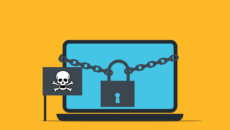
Cybercriminals target corporations with access to sensitive data, often called personally identifiable information (PII). They encrypt it and demand a ransom in return.
This is an ample business opportunity for criminals. And it’s one of the biggest reasons ransomware settlements are rising.
Recovering Damages
Ransomware is a cybercrime that encrypts files on the victim’s computer. The criminals then demand money from the victim to restore access. This can lead to severe financial losses, especially for businesses with a large amount of sensitive data.
The cost of recovering from ransomware is often challenging to estimate and may vary depending on the industry and who you ask. But finding out the actual price of ransomware can help you decide whether or not your business needs to buy insurance coverage against these attacks.
Many factors determine how much a business will pay to recover from a ransomware attack, including time spent by IT pros, loss of revenue due to downtime, the time customers have to wait for service, and more. The number of systems involved and the quality of backups taken before the attack can also affect these costs.
In addition, the costs of ransomware recovery can be influenced by the damage a ransomware attack can do to an organization’s reputation. The adverse effects can be long-lasting and impact investor confidence and the relationship between an organization’s stakeholders and valued employees.
Besides the economic impacts of a ransomware attack, it can also have serious legal consequences for a company. It can result in fines and lawsuits for data breaches, negligence, or other security violations.
Another ransomware attack cost is the time it takes to restore systems. It can take days to re-establish network connectivity and access to critical data.
Recovering Expenses
When a company is hit with ransomware, many expenses must be recovered. These costs include lost data, damage restoration time, and business interruptions.
Depending on the size of your company, the cost of recovering from ransomware may be very high. However, if you have the right insurance coverage, it can help reduce these expenses.
Several factors affect the cost of a ransomware recovery, including country and region, the organization’s scale, the attack’s type and severity, labor costs, network costs, and more. Understanding these factors will help you determine your organization’s best budget.
Cyberattacks can also result in expensive lawsuits and settlements. According to cybersecurity experts like Fortinet, businesses are usually targeted for ransomware settlements rather than individuals, because they likely have insurances to cover the expense thus, making them more likely to be targeted by cyber criminals.
These lawsuits can be based on data losses, leaked customer records, delayed services, or privacy violations. These cases can be costly and lead to hefty fines for companies and insurers.
Another potential expense is the loss of reputation due to public admission of a data breach. This can profoundly impact your brand and lead to losing customer confidence and business opportunities.
If your business can’t recover quickly, you could suffer damage to your reputation that can take years to heal. This can affect your ability to attract new customers, retain existing ones, and build relationships with key stakeholders.
As a result, it’s essential to have an excellent reputation management program in place. This will help you avoid negative publicity and protect your reputation.
A successful reputation management program can help a business avoid the loss of customers and vendors that can result from a ransomware attack. This will help your business survive the disaster and recover quickly.
Recovering Time
Ransomware can take a toll on a business’s operations and reputation. It’s also one of the most costly cyberattacks a company can experience, and it can even lead to lawsuits.
Whether you’ve been hit by ransomware or not, some things can be done to mitigate the damage and restore operations. This includes analyzing the scope of the attack, ensuring that every system is patched and ready to go, and finding and contacting a recovery service provider.
A successful ransomware recovery requires a team of IT professionals and security experts experienced in negotiating ransomware settlements with attackers. This combines real-world experience, technical knowledge, business savvy, and close cooperation between the victim’s IT teams and the insurance provider.
Another essential element of a successful recovery is having data backups encrypted by ransomware. These backups can help get the organization back up and running immediately.
However, restoring an entire system or database can still take time. This is because it’s a lengthy process that involves decrypting the files, monitoring the plans, and much more.
The downtime can be highly disruptive, impacting critical functions and cutting off a company’s supply chain. For example, the Pipeline cyberattack cut off gasoline supplies to nearly half of the East Coast for six days.
Businesses also lose productivity during downtime, which can affect revenue. This is especially true in a business like healthcare, where critical processes must always be maintained.
Fortunately, next-generation quick-recovery solutions can be implemented to help companies recover in hours instead of weeks. They provide cybersecurity protections, including immutable snapshots, write once/read many (WORM) technology, data encryption, modern data isolation, and machine learning to identify anomalies.
Recovering Money
When a business gets hit with ransomware, the recovery cost can add up to millions. That’s not just the ransom paid but also network costs, lost productivity, people hours, and more.
When running your company, you’re working hard to make money and earn the trust of your customers. Taking downtime for weeks can devastate your bottom line, and the damage can also impact your brand image.
The good news is that the cost of ransomware recoveries can be mitigated by making smart investments in more complex security protocols and business continuity planning. However, if an attack catches you off guard, you easily get overwhelmed and feel like you lack the resources to cope.
Fortunately, there are many ways to minimize these costs and keep your organization running smoothly, including using a skilled data recovery team. This team can work with your IT staff and cyber insurance provider to ensure you get the best deal possible while maintaining operational continuity and protecting sensitive data.
Ransomware is malware that encrypts files on the victim’s computer. Once encrypted, files are not accessible without a key that only the attackers know. The attackers will then demand a ransom payment in exchange for decryption keys.
In most cases, the attackers will send a screen to the victim’s computer, stating that their files are encrypted and demanding a specific amount of money to recover them. The victim must then pay the ransom in Bitcoin or another digital currency.
This type of ransomware has been increasing in popularity over the last year, and it’s becoming more common to see attacks against large companies such as hospitals, government agencies, and commercial businesses. The attackers understand that these types of organizations can afford to pay more significant sums of money, which gives them a leg up on smaller firms.




